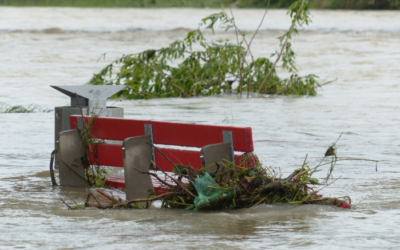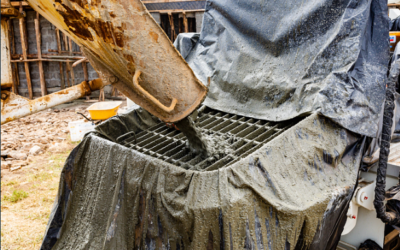Executive Summary. Water in an excavation can tell a story. It can provide valuable information if you watch it carefully. Here are some things to look for in that trench.
Why do I care about water? Just so you know – as an aside to my civil construction readers – water is your home’s worst enemy. It causes degradation of wood frame members, it causes settlement, it scours concrete – it can do plenty of damage. In the heavy/civil arena, it can cause much worst. It can introduce unwanted buoyancy, it can create underground voids, it can increase lateral loads on shoring, it can wash out concrete, wash out subgrade – it’s a mean mutha!
Identifying bad water. Sure there is good water, but we’re talking about bad water here. Here are some questions to ask yourself if you’re in an excavation and see water:
What’s the water source? If you are under the groundwater table (you can verify this if you have soil borings for the job), it’s likely that this is your source: groundwater. However, you better be scratching your head if you’re above the known groundwater table. This could be perched water, artesian flow, or even a broken water line.
Give it a sniff. You smell chlorine, gasoline, or an organic odor? If you’re brave enough to taste it, does it taste salty like the ocean?

Where in the excavation is it coming from? Is it coming from the bottom of your hole, the sidewall, the top (like a waterfall), or even from the sky. The bottom or side is usually the scariest. When from above at least you know it’s likely rain! Is it moving? You should always look to see if the water is moving. If it’s moving that means it’s flowing into or through your hole. If it’s static (no movement), this is probably a good thing.
Bonus on water movement – measuring the flow. You can use the continuity equation1 to estimate the flow of water. Simply throw dirt, leaves, or even spit into the flow of water, and see how many feet it goes in a second, or five seconds. Next, measure the cross-sectional area of the ditch or crack or creek it’s flowing through. Once you multiply them together (see footnote 1 below) you can get the flow, Q. It’s just math. And it’s just an estimate!
Is it dirty or clean? Above we talked about moving water. If you have water moving and it’s dirty, this means that the water is bringing in dirt from somewhere. Is it coming from behind your sheetpile wall which is holding back an active roadway? Yikes, this means that soil from under the roadway is coming into your hole and perhaps creating a void under the roadway!
My story. I’ve designed temporary walls to hold back water, I’ve blown out the bottom of a sheetpile cofferdam, and I’ve lost subgrade on a 1:1 slope the day before the drainage ditch pour. Water’s bad. It’s nasty. It’s mean. It’s heavy. It’s powerful. Besides all of the bad things discussed above, one thing I didn’t mention was one of the other very challenging things about water. And that is how to dispose of it. Because it’s easy to buy a big enough pump to suck the water out of the excavation, but where do you put it? And do you have to clean it first? As if I didn’t say enough things above, you then have to figure out the disposal. My biggest piece of advice: respect the water. Plan for it and have a backup plan for it.
Work safe!






0 Comments